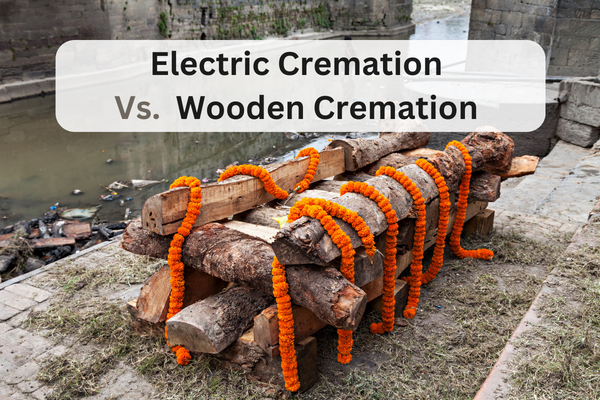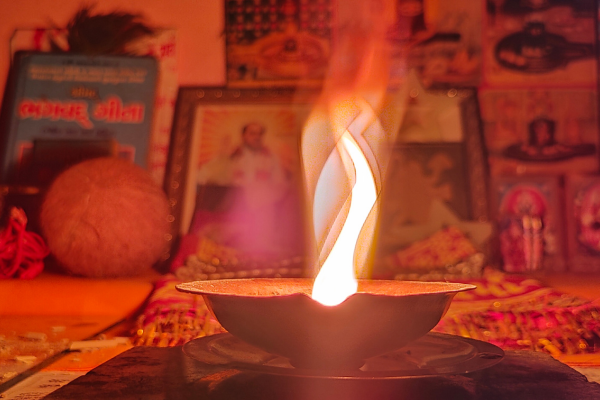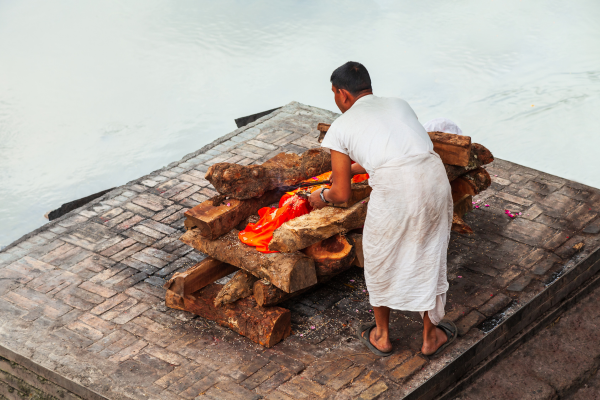Currently Empty: $0.00
Electric Cremation VS Wooden Cremation

Cremation has become an increasingly popular choice for the disposition of remains in many cultures around the world. As this practice gains traction, new technological advancements and alternative methods have emerged, giving individuals the opportunity to choose the option that best aligns with their beliefs, values, and environmental concerns. Two prominent cremation options are electric cremation and wooden cremation, each offering its own set of advantages and considerations.
Contents
Differences Between Electric and Wooden Cremations
1. Process:
Electric Cremation: In electric cremation, the body is subjected to high temperatures generated by electric heating elements. This process breaks down the body into its basic elements through oxidation and evaporation, leaving behind bone fragments. The remains are then processed into ashes.
Wooden Cremation: Wooden cremation, also known as traditional or open-air cremation, involves placing the deceased on a wooden pyre and igniting the wood. The flames and heat from the fire gradually consume the body and the pyre, leaving behind ashes and bone fragments.
2. Timeframe:
Electric Cremation: Electric cremations generally take less time compared to wooden cremations. The use of controlled electric heating elements ensures a more efficient and predictable process.
Wooden Cremation: Wooden cremations can take longer due to variations in the combustion process, weather conditions, and the type of wood used in the pyre.
Electric Cremation: Advantages and Disadvantages
Advantages:
Environmental Impact: Electric cremations tend to be more environmentally friendly as they produce fewer emissions and pollutants compared to traditional wooden cremations.
Efficiency: Electric cremations offer a more controlled and consistent process, resulting in a higher degree of predictability and shorter overall processing time.
Resource Consumption: Electric cremations generally require fewer resources such as wood and fuel compared to traditional cremations.
Disadvantages:
Energy Consumption: Electric cremations consume a significant amount of energy, which could be a concern in regions where the energy grid is not based on renewable sources.
Lack of Tradition: For cultures with strong traditions associated with wooden cremations, the shift to electric cremation may not align with their cultural or spiritual beliefs.
Wooden Cremation: Advantages and Disadvantages
Advantages:
Cultural Significance: Wooden cremations hold cultural and religious significance for many communities, and they are considered a way to honor the deceased’s connection with nature and the elements.
Ritual and Process: Wooden cremations often involve intricate rituals and ceremonies that can be deeply meaningful for the grieving process and offer closure to the family and friends.
Natural Aesthetics: The natural and rustic aesthetics of wooden cremations resonate with individuals who value a more organic and traditional approach to the end-of-life process.
Disadvantages:
Environmental Impact: Wooden cremations release more emissions and pollutants into the atmosphere compared to electric cremations, which can contribute to air quality issues and environmental concerns.
Resource Intensive: Wooden cremations require a significant amount of wood, which can strain local resources and contribute to deforestation if not managed sustainably.
Unpredictable Process: The combustion process in wooden cremations can be less predictable, potentially leading to variations in processing time and the quality of the remains.
Conclusion
The choice between electric and wooden cremation is deeply personal and can be influenced by cultural, environmental, and spiritual considerations. Various cremations are performed by different religions, Some traditional rituals are performed by the Hindus, Christians follow different cremation rituals and process vary according to the religion. Electric cremations offer greater efficiency and a reduced environmental footprint, while wooden cremations carry cultural significance and offer a more traditional approach. As technology and awareness continue to evolve, individuals have the opportunity to make informed decisions that align with their values and preferences, ultimately finding a cremation option that honors both the deceased and the world we live in.








